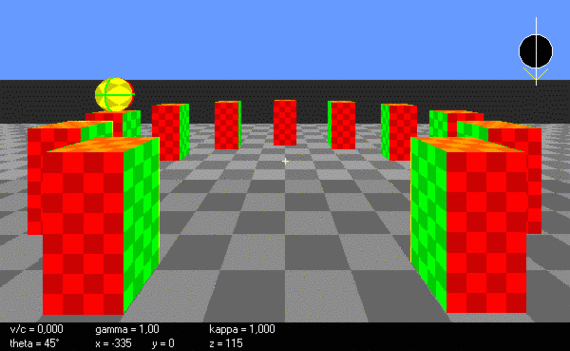


If we move into some direction then, as compared to what we see at rest, we see light rays arrive more from the front, just like rain. This follows from Einstein's Theory of Relativity. The change of the perceived direction of light rays due to our motion is called aberration.
The earth orbits the sun with a velocity \(v = 0.0001c\), i.e. a tenth of a thousandth of the velocity of light. If a star is situated at right angle to the momentary motion of the earth, then aberration tilts the direction, in which we see this star, by 20.5 arcseconds forwards. (1 arcsecond is one-sixtieth of an arcminute, 1 arcminute is one-sixtieth of a degree of arc.) After half a year the earth moves into the opposite direction and we perceive the light from the same star tilted by 20.5 arcseconds into the opposite direction. Altogether aberration changes the observed direction of light from each star in the course of a year by 41 arcseconds.
This tiny aberration of star light was discovered by James Bradley in 1728. His observation was the first direct proof of the Copernican system that the earth orbits the sun.
The stars which are situated at right angle to our direction of motion are in between the stars in our front and the ones in our back. Because aberration shifts perceived light rays into our direction of motion, we see the objects in our fronts in a smaller area than the objects in our back. This seemingly hair-splitting remark is decisive for the understanding of the pictures to come.


